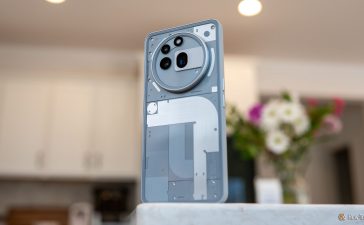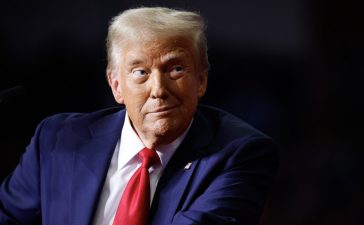The electric vehicle market is growing by leaps and bounds every month in the US, but most of these new EV owners are quickly figuring out they have one big thing in common: our public charging infrastructure sucks very badly.
EV drivers face everything from illogical charging station placement and broken equipment to being forced to use a hodgepodge of payment apps. The fact that America is still in the Wild West days of EV charging becomes readily apparent the moment your range starts dwindling and you’re far from home.
There’s one exception to this, of course: Tesla’s Supercharger network. The automaker claims it’s built the largest public fast-charging network in the world, and there’s no evidence to the contrary. It’s also probably the easiest network to use. The Superchargers have been a significant driver of Tesla’s growth, and it’s helped challenge a lot of beliefs about EV ownership.
Tesla’s “Magic Dock” adapters are here
Until very recently, the Supercharger network’s plugs were designed to work only with Teslas. As of this month, however, the company has begun installing its so-called “Magic Dock” adapters at various Supercharger sites across the country, allowing some chargers to work with any EV that has a CCS plug — basically any modern one. (And besides the plugs being different, the Supercharger’s charging setup is a software-based one that works off Tesla’s app and recognizes the account associated with each car; it doesn’t work like a gas station fill-up.)
This now gives owners of EVs made by Volvo, Mercedes, Ford, BMW, and scores of others access to many Supercharger stations, making long-distance travel easier than ever.
For context, Tesla has about 40,000 Superchargers worldwide and about 17,000 are in the US. The Biden administration — which incentivized this move under the Inflation Reduction Act — said earlier this year that Tesla will open 3,500 Superchargers along highway corridors to non-Tesla customers by the end of 2024 as well as 4,000 slower chargers at places like hotels and restaurants. Tesla also intends to double the number of Superchargers in the US in the coming years.
Taken together, it’s a big expansion of America’s EV charging capabilities and something Tesla has been piloting in Europe for several years. At present, that expansion now covers much of Northern and Western Europe and the United Kingdom.
Taken together, it’s a big expansion of America’s EV charging capabilities
Note that not every Supercharger station has the Magic Dock to charge a non-Tesla — not yet, anyway. They’re still being rolled out across the network. As of this writing, only about a dozen stations are open to other EVs, and all of those locations are in New York and California.
Recently, I decided to see how this process works using an electric Genesis GV60. And I can report it’s a remarkably easy and fast process that puts many other public fast chargers to shame.
The downside is that, unfortunately, you’ll need yet another app — in this case, Tesla’s. (If it makes you feel any better, my iPhone is loaded with apps from ChargePoint, Flo, PlugShare, and a couple of others I forgot about. We’ll get through this together.) But the Tesla app is, fortunately, very simple to use for locating and paying for charging, and you will need it since Supercharger stations don’t accept other forms of payment.
It’s a remarkably easy and fast process that puts many other public fast chargers to shame
First, download the Tesla app for your iOS or Android device and set up an account. The first thing you’ll probably see on the homescreen is “Charge Your Non-Tesla.” You’ll see a list of Tesla chargers near you, including what speed they use and whether they’re open to the public. The red icons indicate chargers open to the public and non-Tesla EVs.
In this case, I took the GV60 up to Hancock, New York, near the Pennsylvania border because the app told me the Magic Dock was there, and I wanted to try this out.
Once you’ve arrived at your chosen station, pull up to an empty spot. Note that many EVs have different plug locations, and Superchargers are designed to work with Teslas, so you may need to expect a little awkwardness.
Next, choose which stall you’re parked next to on the Tesla app, then hit “Unlock Adapter.” Once you do, you should be able to release the Tesla charger plug with the Magic Dock attached.
This is the Magic Dock in action. It’s a bulky piece of plastic that attaches over the normally sleek Tesla plug and turns it into a CCS charger. Now comes the easy part: plug it into your charging port, as I did here with the Genesis.
You should be able to tell on both the app and the car’s display screens that the electrons are flowing and at what speed. With the app, you can go for a walk or grab a coffee as I did while the Supercharger does its thing. That’s a nice addition to the process, and like the Supercharger itself, the app is easier to use and more seamless than many non-Tesla alternatives out there.
I do have a confession to make: I actually didn’t need to charge my Genesis. I just wanted to see how this system would work. When I had enough, I hit the “Stop Charging” button, returned the Tesla plug to its post, and hit the road.
In the 26 minutes I stepped away from the car, I added 24kWh of electricity, enough to take the Genesis from around 70 percent charge to about 90 percent. All in, this cost me $11.76. According to InsideEVs, most of these stations are priced at 49 to 51 cents per kWh, but a subscription plan is available for $12.99 a month, which includes a lower price per kWh.
That may well be worth it if you drive a non-Tesla, live near a Supercharger station, and don’t have many other fast-charging options readily available. It’s probably not worth it for me since I have one of the new EVolve NY fast-charging stations closer by, and those are priced at 35 cents per kWh.
But as the number of Magic Dock-equipped stations increases, a subscription plan could be a great option for some drivers. Regardless of how you pay, this is set to be a big boost for EVs of all kinds now, not just the ones Tesla makes. When more of these sites go live, road trip-related range anxiety could be far less than what it is now.
After all, it’s better than some things Elon Musk is asking you to pay for.
Photography by Patrick George for The Verge










